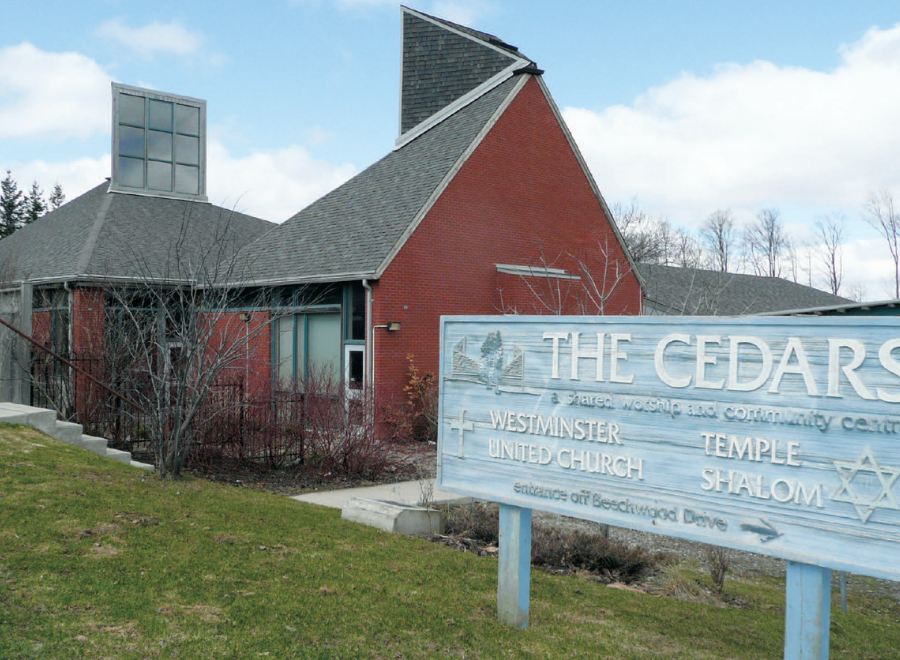I watch a lot of hockey. Usually, I watch it in old municipal arenas with low ceilings, yellowish lighting and nowhere to sit. My feet are cold and the air is stale.
Until last winter, that’s all I expected from my hockey experience.
You may unsubscribe from any of our newsletters at any time.
My take on hockey arenas changed when my daughter had a game at a recently opened facility north of Toronto that spoke a whole new design language. A huge welcoming canopy over an entrance nodded graciously to the harsh suburban roadway. A library and swimming pool under the same roof maximized use of resources and parking. Quiet tables and chairs overlooked the rinks and a squash court. Best of all, there were lots of seats and heating. It made me feel valued as a citizen, part of a bigger community, optimistic. It reminded me that I could be a better person.
As an architect and urban designer, I am often asked to distinguish between good design and bad. It’s not easy, but I think my hockey arena experience is a useful template. Good design reveals truths to us about who we are as a community, and good design creates positive expectations about how we can live our lives within it.
I am also a United Church minister’s daughter and have had ample time to contemplate the design of churches: a small one-room church in Minnedosa, Man., that my father helped build; a “two-praying-hands” A-frame in Dauphin, Man.; Timothy Eaton Memorial United in Toronto with its spectacular sanctuary and multitude of community rooms; and Trinity United in Peterborough, Ont., situated at the end of Simcoe Street, stoically facing downtown.
When elements such as materials and composition work in harmony, when the building interacts politely with its neighbours, when light is invited inside, a church building becomes more than the sum of its parts. It becomes sacred space. It elevates and prepares our souls to hear God’s word. Creating good sacred space should be the goal of all church architecture.
Good space makes us feel at peace with ourselves and connected to our community. It makes us feel at once comfortable and grand. It makes us part of a larger vision and makes us aspire to be there. It is both familiar, in the sense that we can navigate it without feeling out of place, and strange, in the sense that we see the world from a new perspective. Sacred space can be found between people, between buildings and within buildings, and we know it when we see it.
I was a student when I visited Venice for the first time. Crossing Piazza San Marco toward St. Mark’s Basilica, I was overwhelmed by a sense of belonging to a place that millions of others had also inhabited over the centuries. Who were all the souls who shared this space with me? Is it possible that for a split second, every person who has ever visited St. Mark’s has felt the same sense of wonder and belonging?
Many years later, I returned to Italy with my husband and our two children, then aged 12 and 9. As we entered St. Peter’s Basilica in Rome, our children were awestruck by the sheer scale of the building and the inspired human effort required to achieve such ambition. They still talk about it. Such is the power of the place.
How do we create sacred spaces in our own 21st-century Canadian context?
For starters, we need to acknowledge the power of “place” in a country as vast as ours. Different regions shape different identities. Maritimers are different from West Coasters, Montrealers different from Torontonians, Prairie people different from those in the Far North.
Yet globalization is doing its best to make us feel placeless, as if we belong more to a corporate identity than to our geographic roots — think of all the cookie-cutter Tim Hortons outlets from coast to coast.
Churches have the potential to help preserve our sense of place by reflecting the local context in the way they meet their surroundings (it is no accident that most of the historic churches in Toronto face Lake Ontario), the materials with which they’re constructed (local stone, brick and wood), the craftsmanship visible in the buildings’ details — even in the slope of roofs (steep roofs in snowy regions, swooping concrete roofs elsewhere).
Early Canadian Anglican and Methodist church design often tended toward austerity, reflecting the pragmatic values of a nation that was young and still growing: solid masonry bases, with heavy arches over the entrance, a simple bell tower and plain wooden benches. Beauty was found in proportion and in details such as stained glass windows and interior wood carvings.
But the buildings also had meaning. The common cruciform design of the day, with nave and transept in a cross con- figuration, meant that worshippers literally occupied space in Christianity’s central symbol.
In the early 1960s and ’70s, churches (and I generalize because there is certainly a rich variety of examples) tended to experiment with both layout and exterior stylings. Fan-shaped sanctuaries replaced the cruciform, and explosions of colour and transparency replaced brick, reflecting a new spiritual exuberance. Rather than a centre aisle from front to back, many new churches chose multiple aisles into their sanctuaries, helping to democratize and demystify the church experience.
Due to modern pressures such as population sprawl and parking needs, new churches today often locate away from traditional downtown neighbourhoods — in industrial areas, for example, sometimes converting warehouses into sanctuaries. Traditional materials have given way to aluminum and glass. Some newer suburban churches are returning to more traditional layouts, but have taken full advantage of new materials and technologies such as green roofs, solar energy and computer-aided designs.
New contexts create new opportunities. For example, the route from the parking lot to the sanctuary can be designed as a symbolic transition from daily life to the presence of God. The landscape becomes outdoor sacred space, a path to grace.
Good design means putting thought and care into the art and construction of the church. It does not have to be expensive. But sometimes spending a little more on design saves a lot more down the road. A well-designed church — one that makes its space multi-functional, or easier to access, or simply a place of such beauty that it draws new faces — has the potential to be a well-attended and well-loved church.
A good space will remind us that we are not alone, and that together we inhabit a world that can be full of promise and beauty. Sacred space can elevate our understanding of each other and the world we share. It has the power to inspire and delight, to change how we think and behave as individuals and communities. The spaces churches create are also lasting testimonies to what they believe and how they relate to their communities. Evolving design can say a lot about evolving mission and identity.
The history of Christianity is partly the history of churches searching for new and better ways to create space for the sacred. As churches stake out their place in the communities of the future, they should never forget the lessons and splendours of the past, nor should they isolate themselves from the lessons of the present — and that includes hockey rinks.
Lorna Day is manager of urban design for the City of Toronto’s west district.
***
This story first appeared in The United Church Observer’s June 2008 issue with the title “Designing sacred spaces.”













